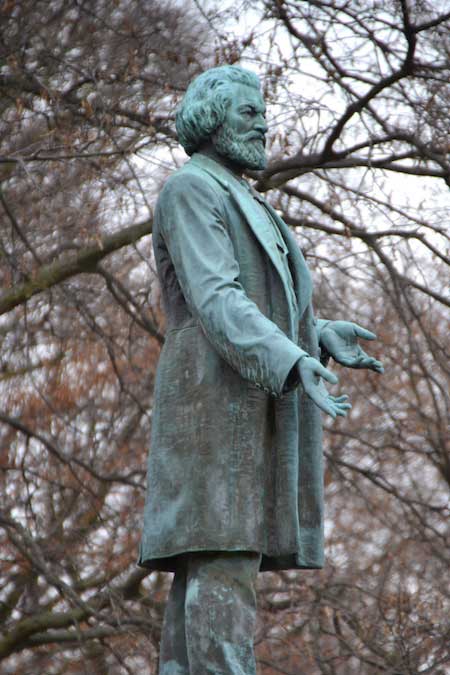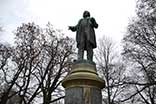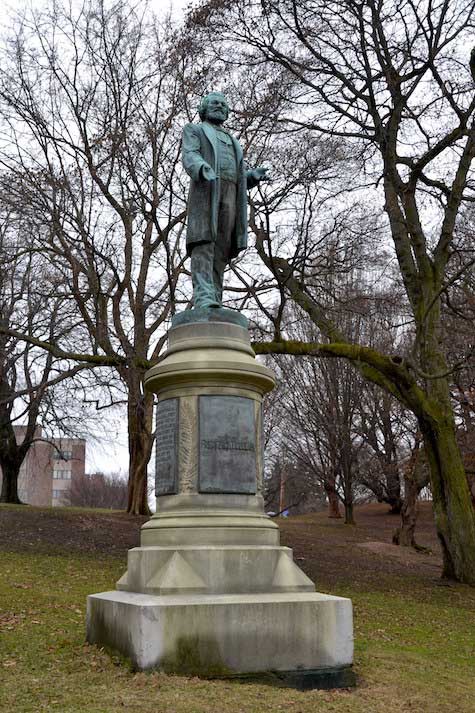Statuesque, New York: Frederick Douglass monument in Rochester first in U.S. to memorialize African American

When it was unveiled in 1899 in front of New York Central Train Station, it was the first statue dedicated to an African American in the country.
The dedication ceremony for the Douglass memorial was attended by 10,00 people, including Theodore Roosevelt, who was then New York’s governor.
The statue was moved to Highland Park in 1941. Rochester officials didn’t think the spot by the train station at the corner of St. Paul Street and Central Avenue was a fitting location for one of the city’s most respected residents. That site was noisy and grimy.
Douglass was born a slave in Maryland in 1818. He escaped the South at age 21 and moved to Rochester in 1847. He stayed for 25 years.
The human rights advocate was a prominent speaker, editor and author, taking on many causes, including women’s suffrage.
(He attended the first women’s rights convention at Seneca Falls in 1848, the only African American male present, and delivered a speech that helped sway support for the suffrage resolution.)
“At any rate, seeing that the male government of the world have failed, it can do no harm to try the experiment of a government by man and woman united…” Douglass said then.

“The best defense of free American institution is the hearts of the American people themselves.”
“One with God is a majority.”
“I know of no rights of race superior to the rights of humanity.”
“Men do not live by bread alone; so with nations, they are not saved by art, but by honesty, not by gilded splendors of wealth but by the hidden treasure of manly virtue, not by the multitudinous gratification of the flesh, but by the celestial guidance of the spirit.”
“I know of no soil better adapted to the growth of reform than American soil. I know of no country where the conditions for effecting great changes in the settled order of things, for the development of right ideas of liberty and humanity are more favorable than here in these United States.”

The Douglass statue overlooks the Highland Bowl in Rochester.

He published the North Star newspaper in Rochester and coordinated Underground Railroad efforts in the area.
Douglass lived in the city until an unexplained fire at his home. He then moved to Washington where he worked for the Garfield and Harrison administrations.
He died in 1895 and Rochester moved to honor him with the bronze statue. It was created by sculptor Stanley Edwards, who used Douglass’s son Charles as a model.
The statue has now been greeting visitors to Highland Park patrons for 76 years. It is located about 300 yards from the site of his South Avenue home. That site is now School No. 12.






























































